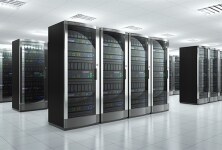
TE Perspectives
How High Speed Connectivity is Enabling IoT
Author: Mike Tryson, VP & CTO, Data & Devices
Next-generation networks such as 5G cellular and WiFi 6+ are launching a new era for the Internet of Things (IoT). With higher speeds and greater data capacities, these ultra-fast, reliable networks can support millions more connected devices that enable everything from relatively simple smart home functionality to more advanced features like automated factories, remote health monitoring, and vehicle fleet telematics.
The coming explosion of machine-to-machine communication
could account for upwards of 50 percent of all internet connections by 2023—and by 2027, there could be 41 billion installed IoT devices.
For IoT to reach this potential, however, the world needs to build out a robust connectivity ecosystem that takes advantage of high speed 5G and WiFi 6+ networks, while also supporting other wireless protocols that are suited to different constraints and requirements of specific IoT applications. That means designing devices and networks around advanced, multi-band antenna solutions that can efficiently handle a wider range of frequencies, creating smaller and more durable embedded components to record and transfer data in a range of environments, and adding infrastructure to help manage the anticipated increase in data surging over wireless networks.
As a connectivity and sensor partner to leading hyperscale and telecom companies, TE collaborates with our customers to tackle some of their biggest design challenges. Here are important innovations we are working on to help IoT achieve its explosive growth potential.

Advanced Antenna Design
Enabling machine-to-machine communication, anywhere and at all times, puts new pressure on the capabilities of embedded and external wireless antennas. Device designers and engineers need access to a range of antenna options to meet the needs of different IoT applications.
One critical feature of IoT antenna solutions is the ability to offer wideband frequency performance—covering everything from low-band, 600 MHz LTE cellular all the way up to the 6 GHz and above for 5G networks. To effectively capture signals across a broad frequency spectrum, antenna technology needs to provide sufficient selectivity and isolation to prevent interference with other IoT equipment.
Each antenna in the IoT ecosystem must also be matched to its application's performance requirements. For example, equipment in a fixed location that features a robust network and good signal strength may get sufficient performance from a simple dipole or blade antenna. As the quality and reliability of the network declines, high gain omnidirectional or directional antennas are typically needed to ensure signal from the devices reaches the network.
To meet these challenges, TE Connectivity offers a full portfolio of antenna solutions that accommodate a mix of frequency bands and performance requirements for different IoT applications. As the rollout of high-speed networks continues to drive new IoT innovations, TE is prepared to develop customized antenna designs to accommodate the frequency ranges and design requirements of new applications.
Form Factor Improvements
As IoT evolves, antennas and sensors with advanced capabilities must also be available in smaller and smaller packages. Whether the application is in wearables, home automation control panels, or tracking devices for intelligent transportation, the demand for miniaturization is already high—and will only increase.
Innovations in printed circuit board (PCB) and flexible circuit board (FCB) antennas have already created powerful options for small form factor applications. We've seen similar progress in miniaturizing the powerful antennas used by public safety vehicles. Gone are the long whip antennas, replaced by discreet shark fin or salt-and-pepper shaker style antennas that accomodate broadband wireless, GPS/GNSS, and other frequency bands required to create a fully connected vehicle.
Our team of engineers is continually working on the technical challenges of adding multiple ports and additional frequencies into smaller antennas to satisfy this demand.
Adaptability for Any Environment
IoT devices need to be everywhere, from a factory floor or a farm field to a person's wrist. Ensuring that those devices can consistently record and transmit data means they must be designed to withstand a range of unpredictable environments.
IoT device designers can select from a wide range of antennas and other components that meet their particular application's standards. As a connectivity solutions provider, TE is commited to rigorous testing of our components to ensure their resilience to temperature, humidity, vibration and shocks, and other environmental conditions that could threaten performance.
Customization is also a key aspect of IoT applications, each having unique environmental requirements. For example, our team worked with a customer that needed an antenna for outdoor electrical boxes in residential neighborhoods. The customer's request was that the antenna had to survive a
direct hit from a baseball bat or a skateboard. Our engineers developed a small, rugged dome antenna that stood up to the test.
Another customer in the medical tech industry came to TE to help develop a wireless, wearable, non-invasive treatment device. We designed a customized antenna that delivers mobile phone-style multi-band 4G LTE connectivity in a device the size of a wristwatch.
Insights on IoT Connectivity
Power Consumption and Heat Management
Accommodating wider frequency bands and providing better signal coverage generally requires devices to consume more power. Higher power consumption typically generates more heat.
Smaller devices and embedded applications can't rely on fans to help dissipate heat. Instead, component makers have turned to multi-functional structural design approaches that help dissipate heat at the circuit board level, which ensures stable performance.
Data Processing and Storage Solutions
Adding millions of additional connected devices to wireless networks will result in a huge increase in data that needs to be transmitted up to the cloud or central data centers. Data centers and cloud computing providers will scale up their capacity to handle this surge. Yet without robust antenna pattern and MIMO correlation performance, there's still a risk of communication delays between centralized servers/storage and IoT devices engaged in real-time safety or mission-critical applications—even with the lower latency offered by high speed networks.
The growth in mission critical IoT applications will drive demand for edge computing solutions that can move data processing and storage closer to IoT devices. Building out these edge networks introduces important new considerations. Data infrastructure housed in an on-site equipment room could face a harsher environment than found in a centralized data center, where temperature and humidity are well controlled. As a result, network designers will have to look for more rugged cables and connectors that are aligned to less controlled (harsher) edge environments.
IoT requires a fully integrated and optimized connectivity infrastructure, which is why TE includes cables and connectors as part of its IoT offering—alongside the antennas, sensors and other components that enable intelligent devices.


Collaborating on the New IoT Architecture
There's no question that high speed networks can help IoT make an evolutionary leap. The vision of smart cities, fully automated factories, and self-driving cars is now becoming reality.
Faster networks by themselves won't create this interconnected world. To achieve the full potential for IoT, municipalities, telecom companies, device manufacturers, building owners and connectivity specialists like TE will have to work together to create a complete ecosystem that's designed for the new opportunities and challenges presented by faster, more powerful wireless networks.
About the Author

Mike Tryson
Mike Tryson is VP and CTO of TE’s Data & Devices business. In this role, he leads the Data & Devices engineering team and strategy, partnering with customers around the world to develop their interconnect solutions and architectures. Mike joined TE in 2011, bringing with him 25 years of experience in technology leadership roles. He has a track record of successfully introducing technology innovations to the data communications market.
Executive Insights: More stories on tech innovation

 e
e
 e
e


